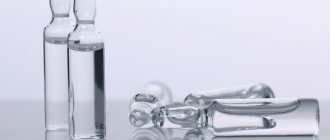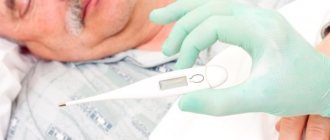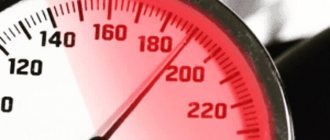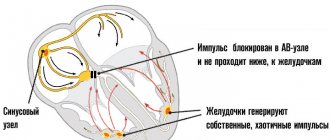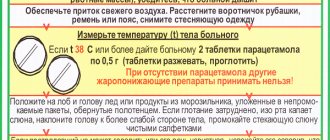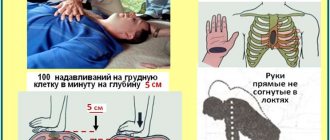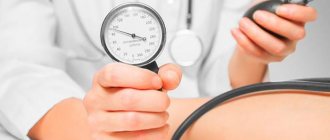A strong surge in pressure is always a surprise. Even “experienced” hypertensive patients are not always ready for such a development of the situation. Regardless of whether the attack occurred for the first time or whether the state of health is regularly disturbed, it is necessary to provide adequate pre-medical care to the patient and adhere to the treatment protocol for the disorder. Effective treatment of a hypertensive crisis is a guarantee that the attack will not leave behind serious consequences and will not worsen the patient’s quality of life.
Hypertension is a common disorder. The disease affects both older and younger people, men and women. But if a regular increase in pressure does not pose a danger to life, then a complication such as a hypertensive crisis can lead to irreparable consequences such as stroke, heart attack, pulmonary edema, etc.
An attack can be triggered by concomitant cardiac diseases and other pathologies, taking or self-cessation of certain medications, dietary errors, bad habits or stress.
First aid and medical aid
When the first symptoms of a crisis appear - increased blood pressure, accompanied by dizziness, pain in the heart, blurred vision, chills, tremors in the limbs, a panic attack, the patient must provide first aid at home and call a doctor. What exactly is the algorithm of action during an attack is described in this article.
Primary diagnosis consists of obtaining data on blood pressure, pulse rate, and the presence of other symptoms
Doctors never focus solely on tonometer readings, since for one patient a crisis will be a figure of 140/90 mm Hg. Art., and for the other – 190/100.
Emergency physicians begin treating the patient with a pill or injection of an antihypertensive drug that effectively lowers blood pressure without sudden fluctuations. Among the drugs most used by doctors are the following, which are recommended to be taken during a hypertensive crisis:
- Magnesia (Magnesium sulfate);
- Clonidine;
- Dibazol;
- Physiotens;
- Sodium nitroprusside;
- Nifedipine;
- Captopril and others.
Subsequent treatment depends on the type of crisis, symptoms of the disorder, the patient’s state of health, the presence or absence of complications and concomitant diseases.
No ads 1
Hypertensive crisis: symptoms and first aid
Nowadays, many people are faced with the concept of high blood pressure. And often increased blood pressure leads to the appearance of hypertension. However, hypertension itself, which has a chronic course, does not pose an immediate threat to life, although it is a risk factor for the occurrence of serious complications associated, first of all, with the organs of the cardiovascular system. However, there is also a period of exacerbation of hypertension. In medicine it is known as hypertensive crisis.
It should be borne in mind that a hypertensive crisis is not just a condition when the pressure suddenly jumped. Episodic increases in blood pressure can also occur in relatively healthy people, for example, during intense physical activity, severe stress, etc. In addition to high blood pressure, a hypertensive crisis is characterized by a number of symptoms indicating a lack of general circulation.
In addition, a crisis is a fairly long-term condition, lasting several hours or even days. A hypertensive crisis, as a rule, does not go away on its own, without the use of therapeutic methods, and if it does, it causes significant damage to internal organs. It is worth remembering that before the invention of effective antihypertensive drugs, the average life expectancy of patients who suffered a severe hypertensive crisis was no more than 2 years.
It should also be borne in mind that, contrary to popular belief, the main symptom of a hypertensive crisis is not a specific, universal value for blood pressure. It all depends on the individual characteristics of the patient and the degree of development of his hypertension. Sometimes a crisis can develop against the background of normal blood pressure readings. Thus, some patients may feel very unwell even at values of 140/90 mmHg. Art., while others may not feel much discomfort even with values of 180/100 mmHg. Art. Therefore, the symptoms accompanying high blood pressure are much more important.
Prevalence of hypertensive crises
Hypertensive crises are somewhat more common in women than in men. If a crisis appears for the first time in a person, then relapses of this condition are possible in the future.
Hypertensive crises are one of the most common cardiovascular diseases. Meanwhile, statistics show that public awareness of it is extremely low. Approximately 40% of Russian residents have experienced a hypertensive crisis at least once in their lives. However, only 60% of women and 40% of men were aware of this. Only 45% of women and 20% of men take the medications necessary to prevent this condition.
Causes of hypertensive crises
The main reason responsible for the occurrence of hypertensive crises is hypertension. However, the condition can also be observed with secondary hypertension that occurs in other diseases:
- cardiac ischemia,
- kidney diseases (pyelonephritis, glomerulonephritis, chronic renal failure, kidney stones),
- traumatic brain injuries,
- strokes,
- hyperthyroidism,
- alcoholism,
- hormonal imbalances,
- atherosclerosis of the aorta,
- diabetes,
- systemic lupus erythematosus,
- nephropathy of pregnancy.
Factors contributing to the occurrence of hypertensive crises are:
sedentary lifestyle; excess weight; diabetes; cardiac ischemia;
abuse of coffee or caffeinated drinks; prostate adenoma;
menopause in women; pheochromocytoma; osteochondrosis; vegetative-vascular dystonia; stress and depression; drinking large amounts of liquid or table salt; changes in weather (warming or cooling) and atmospheric pressure, changes in climatic zones; non-compliance with the regimen of taking antihypertensive drugs (in hypertensive patients); lack of night sleep; overdose of certain drugs (adrenergic agonists, drugs to increase potency).
Particularly noteworthy are bad habits - smoking and alcoholism. It has been found that drinkers are twice as likely to suffer from attacks of high blood pressure, and one cigarette smoked can raise blood pressure by 30 mmHg. Art. Not to mention that both alcohol and nicotine lead to a deterioration in capillary circulation and the condition of small vessels.
The mechanism of crises and their varieties
The mechanism for increasing pressure during a crisis is due to two main factors - an increase in blood output from the heart and an increase in the tone of the muscular walls of the arteries. These changes most often occur under the influence of adrenal hormones - adrenaline and norepinephrine.
In accordance with this factor, two main types of crisis are usually distinguished. In the first type of crisis, the release of adrenaline increases, and in the second, norepinephrine. In the first case, the patient most often experiences an increase in systolic (upper) pressure alone, and in the second case, both systolic and diastolic (lower) pressure.
For a hypertensive crisis to occur, it is necessary not just an increase in blood pressure, but an increased reaction of peripheral vessels to it, resulting in their narrowing. Also, a crisis can often be the body’s response to a cerebrovascular accident.
Often, a crisis is a disruption of the functioning of the renin-angiotensin system, which regulates blood volume and blood pressure levels in the body. An increase in the concentration of enzymes that increase blood pressure - renin and angiotensin - leads to a deterioration in the blood supply to tissues, which, in turn, stimulates the production of a new amount of enzymes. Thus, a vicious circle is formed, which is extremely difficult to break without the use of medications.
Some experts also identify a neurovegetative crisis caused by severe anxiety or stress. This crisis usually resolves within a few hours and does not require hospitalization.
Depending on which pressure increases most during a crisis, eukinetic, hypokinetic and hyperkinetic forms of the disease are distinguished. During a eukinetic crisis, both systolic and diastolic pressure increase symmetrically. With hypokinetic pressure, mainly only diastolic pressure increases. With hyperkinetic, mainly systolic pressure is observed. These types of crises also differ from each other in whether cardiac output is increased or not. With eukinetic, cardiac output is normal, and the increase in pressure is due to an increase in peripheral vascular resistance. During a hypokinetic crisis, the release decreases, and during a hyperkinetic crisis, it increases.
According to the severity, crises are divided into complicated, in which damage to target organs is observed, and uncomplicated, in which this phenomenon does not occur. The principles for choosing methods of treating the disease are based on this division. An uncomplicated crisis is most often characteristic of grade 1-2 hypertension, and a complicated crisis is most often characteristic of grade 3 hypertension. Complicated crises are usually characterized by prolonged development, over several days.
Symptoms of hypertensive crisis
Symptoms may differ depending on what type of crisis is present - hypokinetic, hyperkinetic or eukinetic, complicated or uncomplicated.
The main symptoms characterizing hypertensive crises, in addition to a critical increase in blood pressure, are:
headache; dizziness; noise in ears; pain in the heart area of a stabbing type without irradiation; heart rhythm disturbances (tachycardia, in some cases bradycardia);
weakness; trembling in the body; dyspnea; increased sweating; temperature increase;
feeling of fear, anxiety; involuntary movements of the eyeball; blurred vision, blurred vision or flickering of spots before the eyes.
Headache worsens when moving the head or sneezing. It is often accompanied by pain in the eyes. During crises, the patient's blood parameters may change - the ESR may increase, the number of leukocytes may increase, and the level of protein in the urine may increase.
Sometimes nausea or vomiting, convulsions, and clouding of consciousness may occur. During a crisis of the first type (adrenaline), redness of the skin may be observed. Dizziness is usually caused by spasm of the vertebral or carotid arteries. It may be accompanied by a sensation of movement in space.
Complications of hypertensive crisis
As already mentioned, without appropriate treatment, a crisis can cause significant harm to health. High blood pressure has a negative impact on various organs of the human body. First of all, these are blood vessels and the heart. In addition, circulatory disorders accompanying a hypertensive crisis can impair blood supply to the brain. The organs most vulnerable during a hypertensive crisis are also the liver and kidneys. Damage to organs during crises occurs due to the fact that tissues are deprived of the amount of oxygen necessary for their functioning.
The main complications observed after hypertensive crises:
heart attack, stroke, encephalopathy, Parkinson's disease, decreased intelligence, paralysis, visual impairment, acute renal failure, liver dysfunction, chronic cardiovascular failure, pulmonary embolism, hypertrophy of the cardiac muscle or ventricles, pulmonary edema, cerebral edema, coronary heart disease , aortic aneurysm.
The relatively mild consequences of crises include systemic dizziness and constant headaches. It should be remembered that a severe crisis, if timely medical care is not provided, can lead to death. That is why any person, especially those suffering from hypertension or having loved ones suffering from this disease, should have information about the dangers of a hypertensive crisis, its symptoms and first aid when it occurs.
There are also some factors that contribute to a more severe course of crises and increase the likelihood of complications. This:
- cardiac ischemia,
- elevated blood cholesterol levels,
- diabetes.
Treatment of hypertensive crises
If a crisis occurs for the first time in a patient, or it is more severe than before, then it is necessary to call emergency help. It should be noted that the majority of ambulance calls occur during hypertensive crises. In other cases, a person can be helped independently.
In most cases, hypertensive crises are treated at home. However, in the case of complicated crises, when there is a high probability of target organ damage, hospitalization is possible. Treatment of hypertensive crises in a hospital is carried out in the cardiology department or in the general therapy department. In cases of uncomplicated crises, medical care after the arrival of the ambulance team is usually limited to the intravenous administration of antihypertensive drugs. Further treatment of hypertension is carried out on an outpatient basis.
Lower blood pressure
The first task in treating a crisis is to reduce blood pressure. This can be achieved exclusively with the help of antihypertensive drugs. At the same time, however, it should be remembered that too sharp a decrease in pressure can lead to even worse consequences than the crisis itself, namely: collapse, fainting, and sometimes even a stroke.
During the first 2 hours, it is necessary to reduce the pressure by about 20-25%. In the next 6 hours, it is necessary to strive to reduce the pressure to the upper limits of normal pressure.
Therefore, you cannot take horse doses of drugs, or those drugs whose effect on humans is not known in advance. However, weak drugs are also not suitable in this case.
It must be taken into account that not all hypotonic drugs are suitable for quickly reducing high blood pressure. In particular, drugs of the sartan group or angiotensin receptor antagonists, which are currently most often used for the treatment of chronic hypertension, have a rather long period of absorption into the blood - within several hours and are not suitable for use in cases of hypertensive crises.
The greatest speed and effectiveness of action in hypertensive crises was demonstrated by captopril (Capoten). It is also considered the safest drug, with minimal likelihood of side effects. In particular, it has little effect on cerebral circulation, and therefore there is no risk of ischemic stroke when taking it. The effect of the drug begins 15 minutes after administration. The usual dose is 25-50 mg. To speed up the effect, it is recommended to place the drug under the tongue.
Also, many doctors recommend using nifedipine (Corinfar). A single dose is 10-20 mg. You can take two tablets 5 minutes apart. However, the drug is not suitable for continuous use, as it has more side effects compared to captopril.
If the patient has tachycardia, then you can take beta blockers, such as Tenoric, Anaprilin or Atenolol.
As a backup agent, you can use centrally acting drugs, such as clonidine (Clonidine) at a dosage of 0.3 mg. They help in almost any crisis. Clonidine, in particular, has the advantage that it does not increase cardiac output, which means it is also suitable for severe tachycardia. However, it should be remembered that centrally acting drugs have many side effects. For example, Clonidine in combination with alcohol can lead to severe poisoning. In addition, its constant use can cause drug dependence.
Also, during crises, it is recommended to take diuretics, such as Furosemide. If the patient is prescribed medication for hypertension, he should take that as well.
Treatment of crises in hospital
In an inpatient setting, antihypertensive drugs are usually administered intravenously to reduce blood pressure. The choice of drugs depends on the severity of the condition, the presence of additional symptoms and concomitant chronic diseases - heart failure, arrhythmias, cerebrovascular accidents.
The most commonly used antihypertensive and vasodilator drugs in hospitals are:
- Magnesium sulfate, nitroglycerin, benzohexonium, arfonade, captopril, nifedipine, clonidine, hydralazine, trimethafancamsylate, azamethonium bromide, labetalol, fenoldopam, sodium nitroprusside.
To relieve anxiety and convulsive conditions, Relanium and aminazine can be administered. To eliminate spasms of muscles and arteries, antispasmodics, for example, drotaverine, are used. Eufillin is used to improve cerebral circulation. Diuretics, for example, furosemide, are also effective for hypertensive crises.
It is worth remembering that many drugs used in hospital settings require precise dosage or can only be prescribed in certain cases by qualified doctors. Self-administration of medications to a patient that are not intended for use at home can result in disastrous consequences.
Other methods of assistance
To calm down during a hypertensive crisis, you should take a Validol tablet, Corvalol or Valocardin drops, tincture of valerian or motherwort. The patient should also normalize breathing and make it even. For this purpose, you need to take several deep breaths and exhalations.
In case of hypertensive crisis, you should take a supine position. Walking and any physical activity are unacceptable. You can apply a cold compress to the back of your head. At the same time, drinking is contraindicated for the patient, since water can provoke vomiting, which, in turn, can further increase blood pressure. In addition, excess fluid in the body itself contributes to increased blood pressure. If the patient is wearing clothing that is tight and interferes with breathing, it must be removed or unbuttoned at the throat. You should also ensure access to fresh air into the room. If the patient suffers from chills, it is recommended to wrap his legs in a warm blanket.
After taking hypotensive medications, you should measure your blood pressure after about half an hour. If there is no improvement, you can take another dose of the medicine.
What to tell your doctor
If emergency assistance was called to the patient, the doctor who arrived at the patient should receive the following information:
- How long has the patient had hypertension?
- Which blood pressure values for a patient are considered elevated and which are considered low;
- The presence of other chronic diseases in the patient, except hypertension;
- Duration of the current attack;
- Medications the patient regularly takes;
- Drugs used since the onset of the attack.
The correct choice of treatment strategy depends on how complete the information the doctor receives on these issues. If the doctor suggests hospitalization, then it is better not to refuse it, even if the patient feels a little better. Only in a hospital setting is it possible to conduct a full diagnosis and check whether the attack has affected any vital organs.
Recovery of a patient after a hypertensive crisis
The recovery period after a severe crisis is necessary for the patient in order to minimize the negative consequences of the attack, as well as reduce the likelihood of relapses. Proper nutrition plays a big role in restoring the body. It is recommended to reduce the proportion of animal fats and carbohydrates in the diet, and salt. It is necessary to maintain a daily routine and avoid conflict situations. At first, it is recommended to avoid physical activity, but as you feel better, you should engage in physical therapy and take regular walks. And, of course, you must regularly take the medications prescribed by your doctor.
Prevention of hypertensive crises
Since hypertensive crises almost never appear in the absence of other diseases, preventive measures to prevent them include, first of all, treatment of the underlying disease - hypertension, ischemia, osteochondrosis, renal failure, endocrine pathologies.
Those suffering from hypertension should keep a diary in which their blood pressure is recorded and take medications for hypertension prescribed by their doctor in a timely manner. People whose bodies are sensitive to weather changes need to monitor the weather forecast and take the necessary measures in advance, for example, taking an increased dose of medications. Regular examination by a cardiologist is also necessary. In addition, diet is of great importance. It should not contain products that can cause high blood pressure - first of all, salted, smoked, pickled and spicy dishes, snacks and fast food. Water consumption should also be strictly limited. Drinking coffee, especially strong coffee, is also undesirable.
It is no secret that hypertensive crises are usually caused by disturbances in myocardial contractile function, metabolism, tone and arterial health. Therefore, food should contain microelements and vitamins, the presence of which will help maintain the health of the cardiovascular system. First of all, these are potassium, calcium and magnesium, vitamins A, B, C, E.
If crises are caused by vegetative-vascular disorders, lack of physical activity, stress, then it is recommended to engage in physical therapy, reduce stress levels, and avoid overwork. In addition, it is necessary to give up bad habits - smoking, drinking alcohol.
Cardiologist of the Lyuban Central District Hospital S.P. Rudko
Features of the treatment process
After stopping the jump in blood pressure, the patient must be examined for the condition of the target organs that suffer more than others during a crisis. These are the heart, brain, internal organs, eyes. For this purpose, the following examination methods are used:
- ECG;
- general urine and blood tests;
- taking blood for markers of infarction;
- Ultrasound of the heart and abdominal organs;
- MRI.
The patient is examined by specialized specialists - a neurologist, cardiologist, and ophthalmologist. This is the standard required to get the full picture. The data make it possible to draw up an optimal treatment regimen for an uncomplicated crisis, including long-acting antihypertensive drugs, emergency medications for a sharp rise in pressure; diuretics that reduce the load on blood vessels and the heart; nootropic drugs that protect the brain from the unpredictable effects of a crisis; sedatives that relieve a panic attack and calm a patient for whom the crisis has become a serious stress; antispasmodics for vasodilation.
Nitroglycerin is prescribed for various types of crises to prevent heart damage
If a complicated type of disorder is diagnosed, treatment is possible only in a hospital setting. Often a patient is transported from an ambulance to an intensive care ward, since every minute can be fatal.
Diagnosis of hypertension
The presence of hypertension is determined by a general practitioner or cardiologist. To do this, it is enough to record high blood pressure readings during two examinations. After this, the patient is carefully examined to determine the stage of hypertension. The following diagnostic methods are used:
- 24-hour blood pressure monitoring;
- ECG, EchoCG;
- Ultrasound of the heart, kidneys, adrenal glands;
- laboratory diagnostics to determine hormonal levels, the functioning of the kidneys and adrenal glands, other organs and systems;
- arteriography and Dopplerography allow you to study the condition of blood vessels;
- consultations with specialists (ophthalmologist, neurologist and others).
Forecast
If first aid for an uncomplicated crisis was provided in a timely manner and a treatment regimen was prescribed in a hospital or at home, taking into account all the features of the disorder, the prognosis in most cases is favorable.
The statistics are as follows:
- In 70% of patients, after taking antihypertensive drugs, the pressure decreases and the symptoms of the attack decrease. This allows you to avoid hospitalization. The patient is selected for treatment on an outpatient basis, stabilizing the state of health, and recommendations for rehabilitation are given.
- 15% of patients experience an increase in symptoms. At the same time, complications arise that require immediate hospitalization.
- Another 10–15% of people experience iatrogenic complications associated with excessive or too rapid drop in blood pressure. Against this background, arterial hypotension, collapse, and bradycardia can be diagnosed. The patient is admitted to the hospital for further monitoring of the condition and correction of the treatment regimen.
- Some patients experience a complete lack of effect from drug treatment. In this case, doctors change the therapeutic regimen, following the standards, and recommend hospitalization.
A complicated crisis affects target organs, so the prognosis depends on the severity of the complications. A crisis that is never treated at home may include a transient ischemic attack, as well as stroke, heart attack, pulmonary edema, aortic aneurysm dissection, left ventricular failure, arrhythmia, and cerebral edema. High probability of death.
No ads 2
Recovery after an attack
When the crisis has subsided and the pressure has returned to normal, the patient needs some time to recover. And every body recovers differently. One patient needs to follow doctor's recommendations for 2 weeks, others may feel worse than usual for several months.
During this period, headaches, weakness, and fluctuations in blood pressure are common. Antihypertensive drugs, usual analgesics and other medications, previously agreed upon with the attending physician, help combat the disorders.
Recovery from a hypertensive crisis necessarily includes changes in your usual diet. The basis of the diet is food rich in valuable vitamins and microelements, which has a beneficial effect on the entire body weakened by the crisis, namely:
- magnesium-containing foods - spinach, seaweed, buckwheat, oatmeal, millet, broccoli, seafood, prunes;
- Potassium-rich foods - trout, dried apricots, citrus fruits, black currants, bananas;
- dairy products;
- steamed and baked vegetables;
- low-fat sea fish cooked without fat.
The diet during a hypertensive crisis and during recovery after it excludes the consumption of fast food and other foods that are not valuable for health
Salty, smoked and spicy foods that can cause fluid retention are prohibited. It is worth excluding from your diet foods that cause increased gas formation (legumes, carbonated drinks, baked goods).
Signs of hypertensive crisis in women
Hypertensive crisis occurs more often in women than in men. The causes of hypertensive crisis in women are often associated with dysfunction of endocrine organs. Most often, a hypertensive crisis develops before menstruation and during menopause; the development of a crisis in women is greatly influenced by weather changes, stress, and increased consumption of table salt. Symptoms of a hypertensive crisis in women manifest themselves in the form of severe headache, dizziness, spots before the eyes, nausea and vomiting.
According to statistics, the highest prevalence of hypertensive crisis is in women. Most women do not turn to doctors for adequate treatment and take antihypertensive drugs from time to time. Low stress resistance, high psycho-emotional stress, work in harmful conditions, harsh environment lead to the development of diseases of the endocrine organs, hypertension, and the development of complications - hypertensive crisis.
Rehabilitation
Rehabilitation includes not only drug therapy and dietary nutrition, but also a number of other mandatory rules that can be followed subsequently to avoid relapse:
- It is impossible to recover from a hypertensive crisis without giving up bad habits. You will have to forget about coffee, cigarettes, and alcoholic drinks for a long time, or better yet, forget about them forever.
- Stressful situations should be kept to a minimum. Nervous stress, depression, conflicts - all this negatively affects the health of every hypertensive patient.
- After a crisis, it is important to maintain a work-rest schedule, not to overdo it at work, to rest on time, to wake up and go to sleep at the same time.
- Do you trust traditional medicine? Some recipes can help improve your condition during recovery from a crisis. But before taking medicinal decoctions and tinctures, you must consult a doctor, since not all herbs are compatible with medications.
- Moderate physical activity will help improve blood circulation impaired by an attack or prolonged course of hypertension. The intensity and type of exercises are selected together with the doctor, taking into account the current condition of the patient.
For one person, the optimal solution would be short walks in the park, for another - yoga or swimming.
Even if the condition has completely stabilized, you cannot independently refuse to take the hypertensive medications recommended by your doctor. This can lead to a relapse of the hypertensive crisis with renewed vigor.
Why does hypertension develop?
Various factors contribute to the development of hypertension; very often patients are unaware of their disease until the first hypertensive crisis.
Most often, hypertension develops in people who work night shifts and have heavy physical and psycho-emotional stress. In the development of the disease, hereditary predisposition, intrauterine development disorders, birth injuries, as well as various external factors are of great importance: climate, unbalanced nutrition, work in harmful conditions, harsh ecology, personality traits and psyche, and the ability to build relationships with people.
A hypertensive crisis is a violation of the mechanisms of blood pressure regulation, which occurs abruptly, causing circulatory disorders in the organs. There are two types of crises: hyperkinetic (at the early stage of arterial hypertension) and hypokinetic (at a late stage of the disease, against the background of initial high blood pressure). A hyperkinetic crisis develops acutely, is accompanied by severe symptoms of the disease, and adrenaline predominates in the blood. The hypokinetic crisis is less acute; norepinephrine predominates in the blood. The diagnosis of “hypertensive crisis” is made based on several indicators:
- High rise in blood pressure.
- Sudden onset of crisis.
- Symptoms of cardiac, cerebral and vegetative nature.
